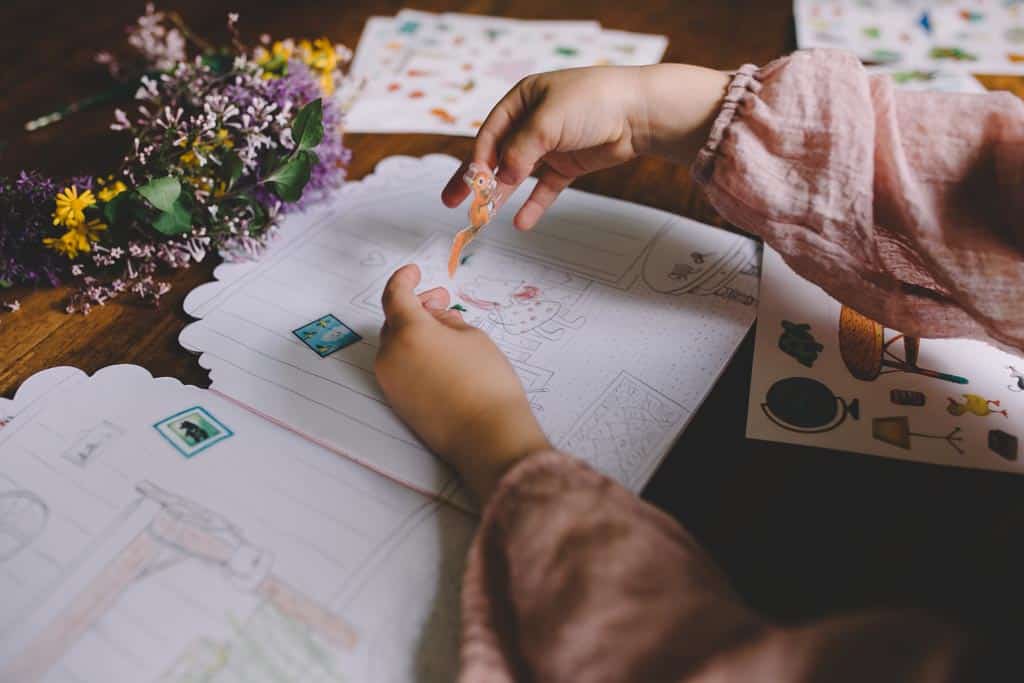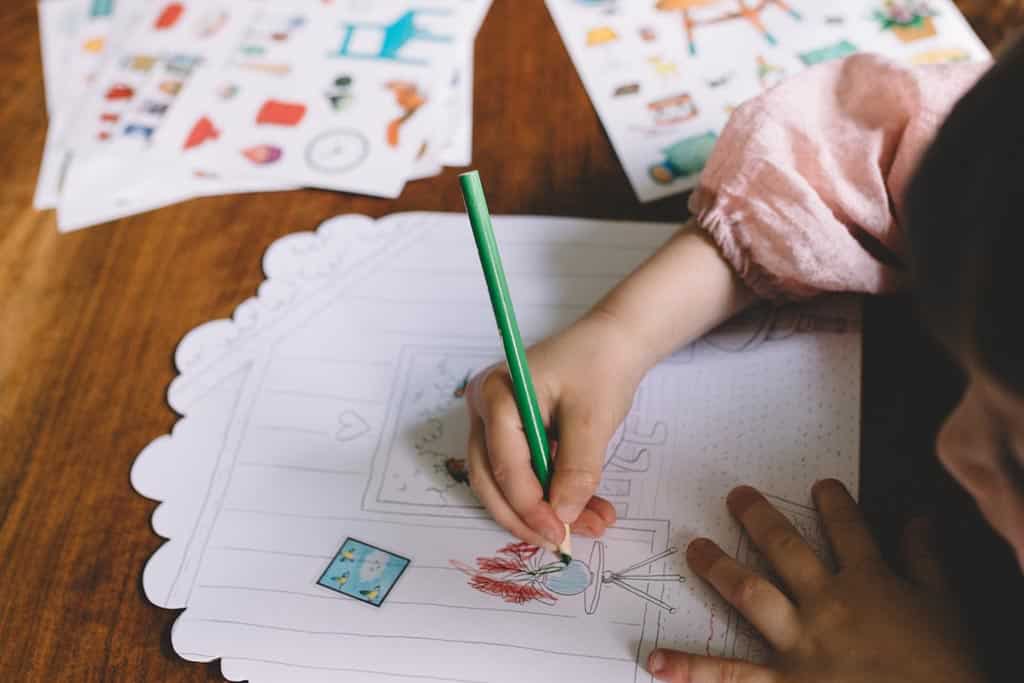
You can’t teach your child to write in an afternoon. It is the work of many years, going right back to birth.
A newborn flaps her arms, a baby shakes a rattle. These are the incipient movements that eventually lead to letter formation.
Writing is a broad topic including letter formation and handwriting, punctuation, spelling, grammar and creative writing. Here are some key points to consider:
- Spelling for the under-fives is usually limited to phonetically plausible words. These are words, like ‘cat’ and ‘dog’ that are spelt how they sound. Tricky, high-frequency words are memorised. Perhaps surprisingly, ‘no’ and ‘to’ count as tricky words as the sound the ‘o’ makes is not the /o/ of ‘hot’.
- Grammar is not necessary in writing at this age, although your child will understand most of the rules through everyday speech.
- Pre-school children can’t write enough to tell a story. But dramatic play and reading will fire the imagination required to write creatively later on.
- Letter formation is based on the same verticals, horizontals, circles and zig-zags that young children naturally produce when they begin to make marks.
- Children as young as 12 months can have a go at writing (supervised at all times). Young babies like to bang the floor or slam a tomato sauce-covered hand onto the table. This is the dot-making motion, which is later refined to become the strokes that form the ascenders and descenders of letters.
- Early mark-making moves from dots and single, unsteady strokes to vigorous zig-zags and spirals as the child develops more control. When a child can draw a circle (without it continuing round into a spiral) and form a controlled vertical line (rather than zig-zagging up and down) they are ready to start forming letters.
- Never put a pencil in a child’s hand before they have a strong tripod grip. Triangular pencils and crayons are a great way to promote this, or just come back to writing when you are all ready. For the very youngest children, choose something that can be gripped with the whole hand, such as Stockmar’s Wax Blocks. These richly-pigmented rectangular crayons make generous marks on paper with the slightest pressure. Even a 12 month-old will happily draw sweeping horizontal arcs and pepper the page with dots. Lots of fun. Just remember, that as with many other mark-making materials, manufacturers do not advise the use of crayons with the under threes. Use common sense and never leave a child unattended.
- Don’t worry about writing on the line yet. Use plain paper. Keep it fun.
- Start by writing your child’s name – this is a useful skill to have when school starts. Then move on to other personally significant words like mum and a pet’s name. If it’s important to your child, you’ll find they want to learn quite difficult words.
- Avoid using specialist handwriting books if you can. They encourage small, jerky lines from one dot to the next rather than smooth, flowing strokes.
- Keep writing fun. Everyone learns to write eventually. Don’t put pressure on your child to be doing it by a certain date.



